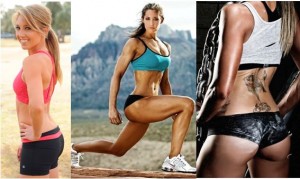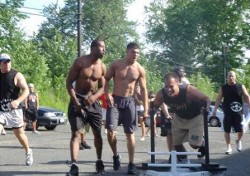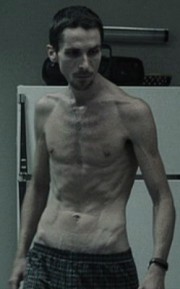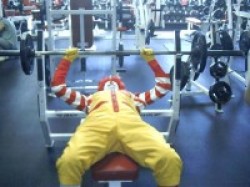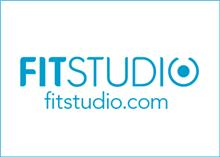Nothing Beats In The Trenches Experience!
November 29, 2011 by danny · Leave a Comment
In the fitness world, science can be very beneficial. Science has helped advance the field and will continue to do so in the years to come. However, it is not without its limitations. The results obtained by researchers may give them X, Y, or Z results – in the setting that the research was conducted. However, not every study ever performed was designed to meet your particular needs in your exact situation.
Another thing about research/science; there is still a ton to be tested. We’ve all formed an opinion based on what we’ve observed with our training and nutrition (and/or while working with our clients). And we didn’t have to wait for a study to be conducted to form this opinion. This is where “in the trenches” experience sometimes trumps science.
With that said, I contacted a handful of Coaches that have logged thousands of hours working with their own guinea pigs. This in the trenches experience has left each of them with training and nutrition information that you just won’t find from the white coats.
Danny: Nate, when it comes to nutrition, what is the biggest mistake that you see from most trainees that are trying to add muscle?
Nate: “I think the biggest mistake is the low-carb trend. Research has shown that for the obese, sedentary, and insulin resistant/type II diabetic populations, low-carb plans are the most effective approach. These populations should follow a Paleo-style plan 100%.
The active, anaerobic athlete whose primary goal is physique enhancement should add back in a select few, low fructose, non-”anti-nutrient” containing carbohydrates to support their training and recovery demands. Recommendations include potatoes, rice, and yams/sweet potatoes.
Still most modern foods like sugar, dairy, bread, juices, and whole grains (as are typical in many physique athletes’ plans) remain off-limits to avoid the host of metabolic, hormonal, and digestive diseases associated with modern eating.”
Danny: Bret, what is THE biggest mistake individuals make when trying to improve their glutes?
Bret: “This one is easy! The biggest problem is that they’re not activating their glutes sufficiently. The gluteus maximus is a strange muscle. It’s always trying to find a reason to shut down and go to sleep. Any lower body injury or pain will shut it down, any activity that’s easy will not activate it sufficiently, and quite often people are performing great glute exercises but aren’t activating them properly throughout the movements. For example, you can squat and lunge while using mostly quad and erector, and you can deadlift and bridge by using mostly erector and hammy. When people learn to activate their glutes properly and master the feel of strong glute contractions, they’ll begin to heavily incorporate their glutes into all of their lower body movement patterns, including squats, deadlifts, good mornings, lunges, hip thrusts, back extensions, and even planks.
Many readers have seen all of my Youtube videos of strong girls and athletes moving heavy weight on their glute exercises, but they don’t start out that way. Most of my clients start out with bodyweight squatting and bridging and I have to work hard to get them to sit back, keep their knees tracking over their toes, utilize proper lumbopelvic mechanics, push through the feet properly, and symmetrically activate the glutes. Once all of these are happening, then I add load. After around six weeks clients almost always boast about how well their glutes work during their sessions.”
Danny: Tim, what is THE biggest training mistake made by the “intermediate” lifter that is trying to add muscle?
Tim: “I would say the biggest mistake an intermediate lifter makes (excluding simply not training hard, because if you aren’t doing that it doesn’t matter what soviet bloc routine you are on) is that they get decent results with one method and they just stick with it too long. They become HIT guys or Westside Guys or DC guys or Kettlebell guys or whatever. To build muscle to you want to stimulate the muscle as much as possible in a variety of ways. You want to do some serious strength training but don’t focus exclusively on that. You should try some higher rep stuff but don’t focus exclusively on that. And a good chunk of time should be spent on the intermediate modalities. A simple guideline is train 25% of the time for strength (high weight, low reps), to train 25% of the time for endurance (lower weight, higher reps – as in 20 or so), and to train about 50% of the time in the traditional size building zone (moderate weight, moderate reps, high volume). Personally I had good success following a HIT routine for 6 weeks (1 all out set on the exercises), a Westside routine for 8-10 weeks, and then a more classic traditional bodybuilding routine for 6-10 weeks and then just rotating through them again. Do several rounds of that and you will be bigger and stronger no doubt about it.
I would also add that a close second mistake is that the intermediate level lifters should start to understand their bodies and start to figure out what works and what doesn’t. Tricep pushdowns might give you big triceps or they might not. Same with dips and close-grip bench press. Don’t just perform an exercise forever because some expert said it would do something for you, give it a fair test (2-4 months) and see what happens. If you don’t get any measurable results from that exercise, drop it and try something else.
Finally try to surround yourself with like-minded individuals that have similar goals and train their ass off. Don’t underestimate the power of training in a productive environment with strong social support. The “me against the world” mentality is nice for a while but it gets old real quick and you only have so much energy, better to use that energy to create a good environment then always fight a bad one.”
Next I contacted this really good-looking guy, Danny McLarty. Since I’m used to talking to myself, the conversation went really smooth!
Danny: What do you find is the biggest mistake made by trainees trying to take their physique to the “next level?”
Danny: “In my mind, there is no doubt the biggest mistake that most people make, is that fact that they change their goals far too often. We all want to have the strength of an NFL linebacker, while having 2.4 percent body fat, while training to knock out GSP, while having so much muscle that we make the average human being look like Christian Bale in the Machinist.
But that just ain’t happenin’. Pick a goal and STAY WITH IT long enough to see it come to fruition. As the great Dan John says, ‘the goal is to keep the goal the goal.’
Don’t go try to get as HYOOGE as possible one week, only to decide it’s time to get shredded the next. Pick one goal, focus all your efforts on this goal, and kick some ass while you are at it!”
Danny: What is the biggest nutrition mistake made by the individual trying to lose fat?
Dr. Clay: “From what I’ve seen, by FAR what holds most well-intentioned dieters back is failing to adhere to a very specific plan. People tend to do things like “eat well” or “eat less carbs” and so on. But if you ask them “how many grams of carbs are you eating?” they don’t know exactly.
One must first have a specific plan. For example, “have 150 grams of carbs on days I lift weights.” Then to make sure that actually happens, write down EXACTLY how many carbs you consume. After a couple weeks, you’ll know if that’s gonna work or not and you can tweak from there. (Of course the same goes for protein and fat.)”
Science is great, and I know it has influenced each one of us involved in this Q and A. But NOTHING is more helpful than experience training people in real live situations. Many people say that knowledge is power. I disagree – knowledge is information, applied knowledge is power. In this article, you have information that you can APPLY right away. Do so and go take your physique to the next level!
If you have any tips that you have found to be particular beneficial in your training/nutrition plans, let us hear them in the comments section below.
If you’re on twitter, you can find me @DannyMcLarty
High Volume Training while “Bulking”
I just started a new training block, as well as a shift in my physique goals. As we say goodbye to summer, having ripped abs is no longer priority numero uno. I made a facebook post last week saying that I am starting “bulking season.” Then, Mark Young yelled at me. What an a-hole, can’t he let me gain weight in peace!?! Just kidding, he didn’t really yell at me. He just stated that he is not a fan of the word ”bulking,” when gaining size becomes a trainees priority. And I can see where he is coming from. This is true because for many people, “bulking” season simply equals an excuse to become fat. Just because the number on the scale goes up, it doesn’t mean that you are putting on quality weight. Mark said he prefers that it was called “lean mass accretion season.” Ha, that is funny! It is a actually true, as adding lean mass rather than fat mass is what we are looking for. I’m just not so sure that phrase will be one that sweeps the nation anytime soon. Good try though, Mark!
Just because the number on the scale goes up, it doesn’t mean that you are putting on quality weight. Mark said he prefers that it was called “lean mass accretion season.” Ha, that is funny! It is a actually true, as adding lean mass rather than fat mass is what we are looking for. I’m just not so sure that phrase will be one that sweeps the nation anytime soon. Good try though, Mark! ![]()
Anyway, I accept that some fat mass will accumulate with my attempt to add muscle this lean mass accretion season (there you go Mark, it’s already catching on). But my main goal is to add muscle without becoming a fat, softy. In going from six pack emphasis to hypertrophy (muscle gain) emphasis, I’m taking a bit of a different approach than I usually do. To gain muscle, we must have a balance of intensity (heavy weight that is close to our 1 rep max) and volume (the amount of reps in a session). But all of the volume in the world is not going to do much for you if you haven’t spent many years under the bar working on your strength. In other words, if I’m going to do a high volume of bench pressing in a session (lets say 8 X 12), but my 1 RM (rep max) is only 95 pounds, I have no right to go to a high volume approach.
The light weight for 96 reps (8 X 12) won’t do a thing for me in attempt to add size to my pecs, shoulders, and triceps. So, if you are newer to training, spend some time (years) getting stronger before you ever think about using a high volume approach in your training.
With the said, my idea of high volume is different than what some others may consider high volume training. My friend and Physique Coach, Dr. Clay Hyght and I have had a number of discussions about the benefits of high volume training. Dr. Clay is convinced that to achieve as much as size as possible, high volume training must be used (or at least incorporated throughout the training year). And I’ve also seen some of the programs written by another Coach that I respect, John Romaniello. I usually have to do a double-take and I say to myself, “wow, that is a HUGE amount of sets/reps!” So, when I wrote up my current program last week, I had to keep telling myself, “more, more, more,” in regards to amount of sets/reps I programmed in for myself. Again, high volume to me is a little different to some of these other successful coaches. But I decided that I’m going to go for it. And all of the calories I am taking in will go along well in turns of helping with recovery.
A few of you have asked me what the program looks like. I don’t want this post to drag on too long, so I’ll be back in a couple days to show what the program entails. Maybe I’ll include a few pictures in a couple weeks as well, so we can see if all these calories and reps are doing me right. Stay tuned…

